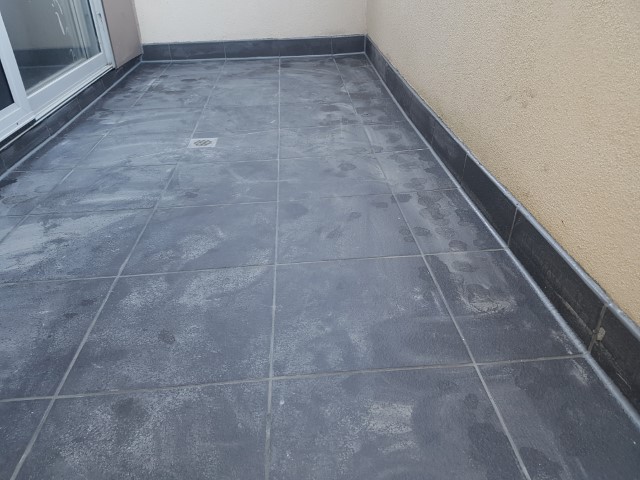As for maintaining your home, joint sealing may not be the primary service that comes to mind, but its value can't be emphasized enough. Professional caulking offers a crucial line of shield against moisture issues, heat loss, and even pest infestations. Many property owners underestimate the potential consequences of worn or deteriorated caulking, but neglecting it can lead to costly repairs down the line. In this article, we will explore the costs associated with caulking services, what constitutes a reasonable cost, and what you can expect during the process.

Comprehending the nuances of caulking can empower you to make educated decisions about your home maintenance. From recognizing the signs that it’s time to replace your old caulking to discovering the types of caulking suited for different surfaces, we will explore how adequate caulking not only improves your home’s aesthetic but also considerably enhances its energy efficiency. Whether you’re considering a DIY approach or selecting professional services, this article will direct you through the fundamentals of caulking and its long-term benefits for your property.
The Significance of Caulking
Caulking plays a critical role in preserving the integrity of your home. It acts as a seal that seals gaps and joints around glass openings, entrances, and other areas. This seal is important in stopping air leaks, which can lead to higher energy costs and a suboptimal living environment. Without sufficient sealing, your home may become more vulnerable to extreme temperature changes and drafts, affecting overall energy efficiency and comfort.
In furthermore to its energy-saving benefits, caulking is essential for shielding your home from moisture damage. Water intrusion can cause serious damage over time, leading to mold, mildew, and structural issues. By effectively sealing openings, sealing helps keep moisture out, defending your interior walls, flooring, and foundation from the damaging effects of water. Maintaining proper caulking in these areas is therefore necessary for long-term safeguarding and comfort.
An often-overlooked aspect of sealing is its impact to the aesthetic appeal of your home. Well-maintained sealing enhances the appearance of glass openings and doors, providing a clean and complete appearance. On the other hand, damaged or decaying caulking can diminish your home's exterior, making it look unkempt. Regular maintenance of your sealing not only preserves the structural integrity and functional elements of your property but also ensures that it remains aesthetically pleasing.
Signs to Recaulk
Eventually, caulk can break down because of exposure to the elements and varying temperatures. One of the initial signs that it’s time to re-caulking is clear breaks or peeling. If you notice gaps forming between the caulk and the material it’s meant to protect, this is a strong indicator that the caulking is no more working as it should. Inspect areas around window frames and doors, as well as joints in restrooms and culinary spaces, for such signs of damage.
In addition, to be aware of is damage from water or stains on interior walls and ceilings, which can occur when the seal has stopped working to provide a proper seal. If you notice any signs of moisture or mold in these areas, it may mean that water is entering due to compromised caulking. https://vanmagic0.werite.net/an-pair-created-for-heaven-caulking-and-home-heating-solutions affects the look of your home but also leads to high repair costs if left untreated.
In conclusion, consider the thermal efficiency of your home. If you often constantly modifying your temperature settings or detect a draft coming from windows and doors and door, it might indicate that your caulking is not effective. Recaulking can help re-establish the seal, boosting energy savings and helping decrease your costs. Keeping an eye on these signs can help maintain the condition and coziness of your home.
Do-It-Yourself vs. Professional Caulking
In deciding whether to tackle caulking as a DIY project or hire a specialized company, it is essential to evaluate your abilities and the difficulty of the job. Doing caulking yourself can save money, but it also demands a steady hand, an understanding of the materials, and the ability to adhere to correct methods. Many homeowners have had success with do-it-yourself tasks, particularly in uncomplicated areas like sink areas or molding. However, lacking proper knowledge, mistakes can lead to ineffective sealing and further complications down the line.
Conversely, expert caulking solutions bring specialist knowledge and know-how to the table. Qualified professionals can ensure that the right type of caulk is used for each particular application, be it for inside or outside projects. They also have availability of high-quality materials and the proper tools, which can greatly improve the job's overall outcome. Moreover, professionals can spot underlying problems, such as mold or damage that may go unseen by an untrained eye, providing a thorough solution than just applying caulk.
In the end, the choice between DIY and get a professional will depend on the scope of your project and your confidence with home fixes. For small and simple jobs, DIY might be enough, while larger or more complex jobs are often better suited to those with the right training and experience. Weighing the long-term advantages and potential financial savings against the chance of poor installation can assist you make an educated decision.
